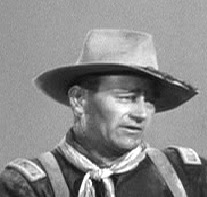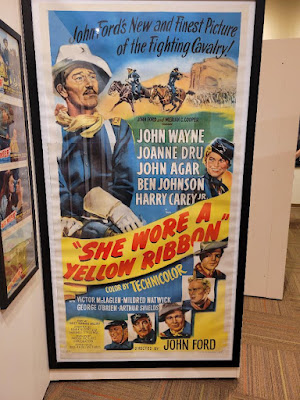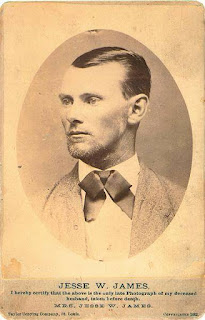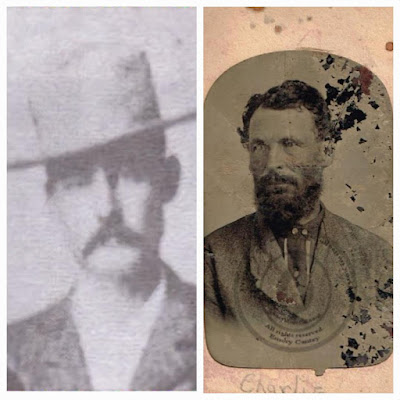Luke Short Charley Storms
Courtesy Emory Cantey
INTRODUCTION
The
subject of this narrative might have died with
his
boots on, for he had many chances, but he
didn't...
-
Lawman Bat Masterson on Luke Short
Luke
Short was Gambler and member of the Dodge City Peace commission during
the famed “Saloon Wars” who moved to Leadville, Colorado, in
1879, Where he formed his reputation as a gambler and gun slinger.
The famed Lawman Bat Masterson later wrote in his book “Famous
Gunfighters of The Western Frontier” that Short had seriously
wounded a man during a gambling dispute in Leadville. When
Luke settled in Leadville Colorado and began a career of gambling, he
became acquainted with wealthy socialites of higher class. And was
thrown into a society of rich mine buyers, as well as mining
promoters. It
was the first place where he had ever seen a game of faro played, and
he was fascinated.
Many a Cow-boy and gambler lost at the faro tables of the
gambling establishments in western towns
Photo
from awesome.com
One
day Luke ran afoul with a bad man with a gun in one of the camps (sic
Bat Masterson), prominent gambling houses. The “bad man” himself
who had a record of violence attempted to take some liberty with Luke
Short during the faro game. Short told the man to keep his hands off
his bets, there was a short exchanged of unpleasantries. The faro
dealer was scared out of his wits and thought the “bad man” would
fill Short
full of holes. The dealer however underestimated short, as the “bad
man” reached for his pistol, short was quicker on the draw and
pulled his pistol in a flash and stuck it in the 'bad mans” face
and pulled the trigger. Ther “bad man” did not die, and there was
no arrest or trial. Such things happened in Leadville every day.
The
Gunfight with Charlie Storms
Snuffing
out a Gambler
Luke
Short first met Wyatt Earp, William H. Harris, and Bat Masterson in
Tombstone. Harris knew Short previous to this time, and had no
problem convincing his partners to engage Earp as a faro dealer at
the Oriental Saloon in Tombstone Arizona. On Friday, February 25,
1881, Short was acting as a lookout for the faro game, He was
seated next to the dealer at a faro table in the Oriental, when he
was involved in what became a well-known gunfight that was covered by
several newspapers and remembered in Masterson book "
Famous
Gunfighters of the Western Frontier" His antagonist, was Charlie
Storms, who was also a fairly well known gambler. Bat Masterson, who
was in Tombstone during this time, described what happened in a
magazine article he wrote in 1907:
Storms
did not know Short, and like the bad man in Leadville, had sized him
up as an insignificant-looking fellow, whom he could slap in the face
without expecting a return. Both were about to pull their pistols
when I jumped between them and grabbed Storms, at the same time
requesting Luke not to shoot, a request I knew he would respect if it
was possible without endangering his own life too much. I had no
trouble in getting Storms out of the house, as he knew me to be his
friend ... I was just explaining to Luke that Storms was a very
decent sort of man when, lo and behold!, there he stood before us,
without saying a word, he took hold of Luke's arm and pulled him off
the sidewalk, where he had been standing, at the same time pulling
his pistol, a Colt's cut-off, 45 calibre, single action; but like the Leadvillian,
he was too slow, although he succeeded in getting his pistol out.
Luke stuck the muzzle of his pistol against Storm's heart and pulled
the trigger. The bullet tore the heart asunder, and as he was
falling, Luke shot him again. Storms was dead when he hit the ground.
Storms'
body was taken to the town undertaker, where a coroner's jury was
convened in haste, and testimony was heard. The jury reached a
verdict quickly stating that Storms died from three pistol wounds at
the hands of Short, and that Short's actions were justifiable. Short
was free to go, as no further legal action was taken.
Two
Articles located on
Newspaperarchive.com

Phoenix
AZ Herald
.jpeg)
Case
was discharged by Justice Wallace on grounds of self-defense
LUKE
SHORTS TESTIMONY FROM THE DEADWOOD PIONEER NUGGET
March
13, 1881


The
spring of 1881 found Luke Short in Tombstone Arizona, dealing faro in
a house managed by Wyatt Earp.
-Bat
Masterson

Luks
Short testimony continued

Storms'
body was taken to the undertaker, where the coroner's jury was
convened and testimony was heard. The jury reached a verdict that
Storms died from three pistol wounds at the hands of Short, and that
Short's actions were justifiable. Short was free to go, as no further
legal action was taken.
Five
days after Storms died, the Leadville Democrat wrote about the
shooting. It said that
Storms
approached Short and "catching him by the ear", demanded an
apology. According to the account, Storms grabbed Short's ear with
his left hand and his right hand contained a pistol aimed at Short.
Short drew his weapon and shot Storms, who returned fire, but missed.
Short then put two more bullets into "the sinking soul of
Storms.
On
February 28, 1881, at the Oriental Hotel, gamblers Luke Short and
Charlie Storms had a verbal altercation which was deescalated by Bat
Masterson, who was also an acquaintance of Storms as well. Storms
later returned to the scene and walked up, said nothing and pulled a
gun, On Storms, a cut-off Colt .45 pistol, but Short was quicker.
Short shot Storms twice before he hit the ground; the first shot
fired was so close that it set fire to Storms' shirt. Short was said
to have then turned to Bat Masterson and stated: "You sure
pick
some of the damnedest friends, Bat." Ben Sippy arrested Short,
but the shooting was determined to have been made in self-defense.
Photo
from the Authors Collection
Wyatt
Earp
Wyatt
Earp would later say
that
he helped to carry the body of Charlie
Storms
back to the San Jose rooming house
where
the now-deceased gambler and Lyons
had
been staying, so that a post mortem could
be
performed by Dr. Goodfellow.
-Peter
Brand 2015
"The
Killing of Charlie Storms by Luke Short"
Photo from the Authors collection
Bat
Masterson;
Bat
Masterson Claimed that he was a direct witness of the shooting,
This
claim is most likely correct.
Photo
from the Authors collection
Luke
Short
In
the Spring of 1881, Luke Short was dealing Faro at the Oriental
Saloon in Tombstone Arizona which was managed by Wyatt Earp. There
was an incident between Luke Short and Charlie Storms over a gambling
issue and guns came into play.. Bat Masterson was present and
intervened in the disagreement and initially deescalated the
situation. Masterson managed to cool things down,
and escorted Storms to his room. Bat Masterson was friends with both
Charlie Storms and
Luke short. But Storms and Short didn't know one another. Masterson
walked back over to Short and was trying to explain to Short that he
thought Storms was a decent guy, when as Bat stated " When... lo
and behold, there he stood before us." Storms said nothing but
started to pull his pistol. Unfortunately Luke Short was faster,
pulled his gun, stuck the muzzle of the gun to Storms heart, and
pulled the trigger.
-Bat
Masterson
He
probably died instantly. Bat Masterson tells us in his book that Luke
was given a quick hearing in front of a Magistrate and was quickly
exonerated .Bat Masterson was present in Tombstone and attended the
hearing
-Famous
Gunfighters of the Western Frontier.
W.B.
(Bat) Masterson

Photo
of Charlie Storms from the
Cantey
(Myers) Collection
This
unique image of Charlie Storm came in a group of personal items
pertaining to Luke Short sold by his relatives. Luke Short and
Charlie Storm were involved in a gun fight in Tombstone, Arizona in
1881. It may be the only known image of Storm.

A
well known photo of the Dodge City Peace Commision.
Luke Short date
unknown




















































.jpeg)













